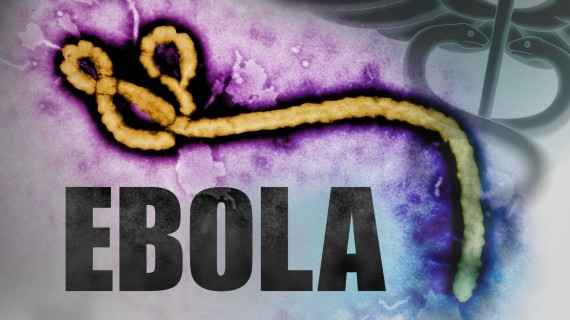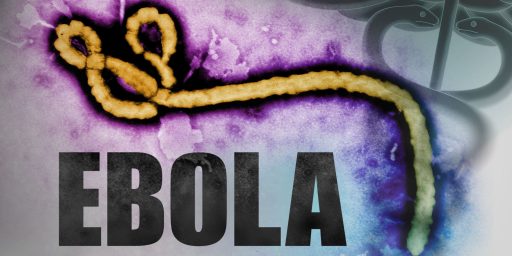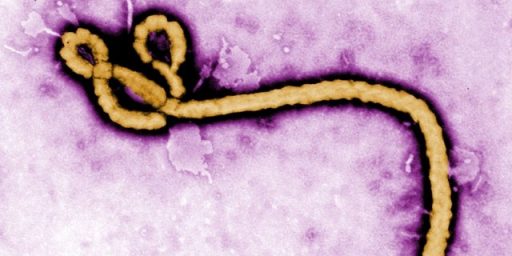Worldwide Ebola Cases Top 16,000 With 7,000 Dead, But There Is Some Good News
The numbers on the Ebola outbreak are bad, but they aren't as bad as had been feared.
The numbers on this year’s Ebola virus outbreak aren’t quite as bad as some of the most dire predictions, at least not yet, but they’re still pretty bad:
(CNN) — The number of confirmed, probable and suspected cases of Ebola in the current outbreak has surpassed 16,000, according to the World Health Organization, with nearly 7,000 deaths from those cases.
The United Nations’ health agency issued its latest numbers Friday, focusing on how Ebola has affected Guinea, Liberia and Sierra Leone — the three countries where the vast majority of cases have occurred.
Liberia has been hit hardest, with the WHO reporting 7,244 confirmed and potential cases as well as 4,181 deaths.
Both numbers reported Friday are significantly higher than those released earlier in the week. The WHO and other health agencies have long said the scale of the Ebola outbreak is likely significantly worse than even the current high numbers indicate, because many people died before they could be diagnosed and many contracted the disease in remote areas without ready access to health care.
The U.N. health agency recently noted that the situation in Liberia has stabilized in the past five weeks, after the rate of new cases declined from mid-September through mid-October.
The one country where WHO has reported a significant uptick — with 385 new confirmed cases during the week of November 23 and 533 in the previous week — is Sierra Leone.
Ebola and similar contagious diseases are not new to Africa, but the latest outbreak has been particularly virulent and deadly. About 60% of those infected have died from the virus, according to WHO.
The rapid infection rate fanned concerns that, due to the relative ease of international travel, Ebola might spread outside the continent. In fact, there have been new cases of Ebola in the United States and Spain, though such incidences remain a tiny fraction of the overall outbreak.
As I noted, if there’s any “good” news in all of this, it is in the fact that the spread of the disease has not matched some of the worst-case scenario numbers that we saw as recently as September, Back then, the Centers For Disease Control issued a worst case scenario projection that there could be as many as 1,400,000 Ebola cases by January, a number that would start approaching endemic or even pandemic proportions. Another forecast from the World Health Organization a couple weeks later set a worst case scenario of as many as 10,000 new cases per week. Given the numbers today and the rate of infection, it’s unlikely we’ll see that number unless the disease gets out of control, which is certainly still possible notwithstanding the small victories we’ve seen in places like Liberia. As I noted yesterday, while Liberia seems to be seeing some success and there have also been apparently successful containment of the disease in Nigeria and Mali , the same cannot be said for Sierra Leone, and the possibility that the disease could worsen there and continue to spread is obviously
The other element of good news, of course, is the fact that, so far at least, the disease has not gained a foothold of any kind outside of western Africa. In the United States, only two people have actually caught the disease while in country, both of them health workers who were treating Timothy Eric Duncan, the Liberian citizen who flew to the United States only to be diagnosed with the disease in Dallas just over a week after his arrival and who unfortunately died in a hospital there. Both of those workers were treated, cured, and released. In addition, American hospitals have successfully treated one person, Dr. Craig Spencer, who apparently caught the disease while working with Doctors Without Borders in western Africa, and an additional six people who were evacuated from the Ebola hot zone for treatment in the U.S. Of those six, only one, an American surgeon named Dr. Martin Salia who was evacuated in mid-November when he was already in the later stages of the disease, has died. Including Mr. Duncan, then, there have been ten total Ebola cases in the U.S. during this outbreak and eight of the victims have survived, an 80% survival rate that is nearly the opposite of the 60% fatality rate that we see in Africa, although admittedly the small number of cases here makes a comparison somewhat inappropriate. In Europe, meanwhile, two Christian missionaries who were brought to Spain for treatment died in September, but the one health care worker who was infected while treating them was successfully cured of the disease. There have been no other cases of the disease outside of Africa, yet, and that’s good news.
Obviously, vigilance is still the watchword here, both in terms of fighting the disease in West Africa and in terms of screening to ensure as best as possible that the disease does not spread beyond the hot zone. So far, though, there does seem to be some reason for hope in both areas.




The CDC – despite ignorant, panic-mongering sniping from people whose intended target is actually Mr. Obama – has done a very good job.
The UN and NGOs like Doctors Without Borders are taking the brunt of this and in the process effectively defending us in this country. Something to bear in mind next time folks decide we can live without the UN.
And as an atheist I’d like to point out as well that a large number of the people going into Sierra Leone and Liberia are apparently Christians motivated by their faith, and we should honor them for that work.
Also, work on vaccines is looking promising. It continues to look as though we are not dealing with an outbreak due to a new, more virulent virus, but because of social practices. As those practices are changing, the spread is slowing.
Steve